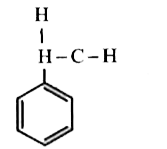A
B
C
D
Text Solution
Verified by Experts
The correct Answer is:
|
Topper's Solved these Questions
ELECTRONIC EFFECTS AND REACTION INTERMEDIATES
AAKASH SERIES|Exercise LECTURE SHEET ( EXERCISE-I (LEVEL-II (ADVANCED)) (Matrix Matching Type Questions)|2 VideosView PlaylistELECTRONIC EFFECTS AND REACTION INTERMEDIATES
AAKASH SERIES|Exercise LECTURE SHEET ( EXERCISE-I (LEVEL-II (ADVANCED)) (Integer Type Questions)|5 VideosView PlaylistELECTRONIC EFFECTS AND REACTION INTERMEDIATES
AAKASH SERIES|Exercise LECTURE SHEET ( EXERCISE-I (LEVEL-II (ADVANCED)) (More than One correct answer Type Questions)|5 VideosView PlaylistELECTRON MIGRATION EFFECTS
AAKASH SERIES|Exercise QUESTIONS FOR DESCRIPTIVE ANSWERS|10 VideosView PlaylistELEMENTS OF BORON FAMILY
AAKASH SERIES|Exercise OBJECTIVE EXERCISE - 3|7 VideosView Playlist
Similar Questions
Explore conceptually related problems
Knowledge Check
A
B
C
D
Submit
A
B
C
D
Submit
A
B
C
D
Submit
Similar Questions
Explore conceptually related problems
AAKASH SERIES-ELECTRONIC EFFECTS AND REACTION INTERMEDIATES-LECTURE SHEET ( EXERCISE-I (LEVEL-II (ADVANCED)) (Linked Comprehension Type Questions)
- If a compound contains conjugated system, the measured bond lengths di...
02:29
|
Play - If a compound contains conjugated system, the measured bond lengths di...
01:53
|
Play - If a compound contains conjugated system, the measured bond lengths di...
02:45
|
Play - Hyperconjugation describes the orbital interactions between the p-syst...
01:55
|
Playing Now - Hyperconjugation describes the orbital interactions between the p-syst...
02:31
|
Play - Hyperconjugation describes the orbital interactions between the p-syst...
03:33
|
Play

